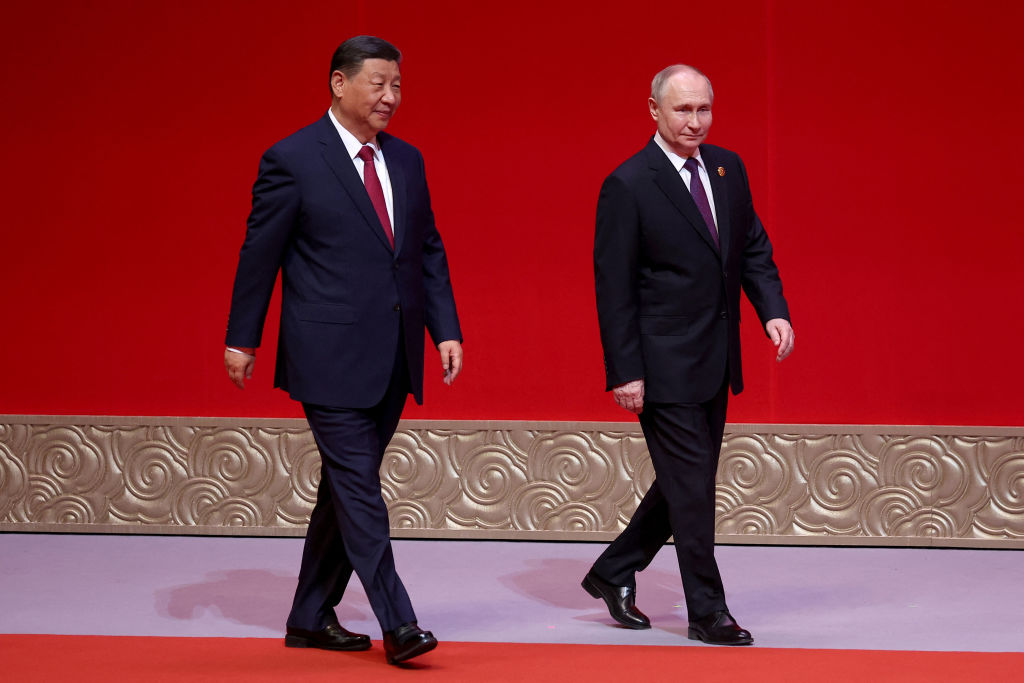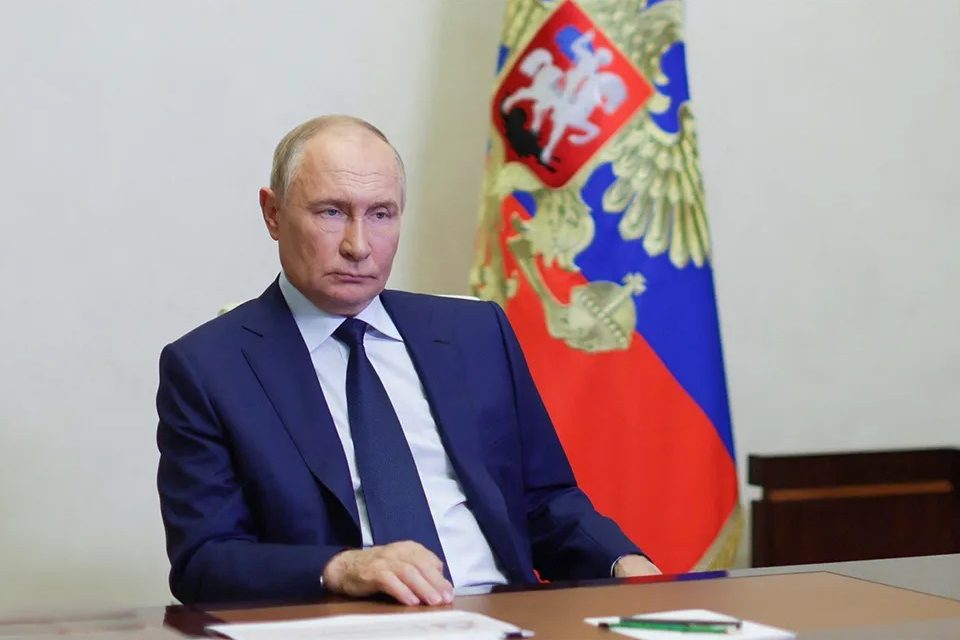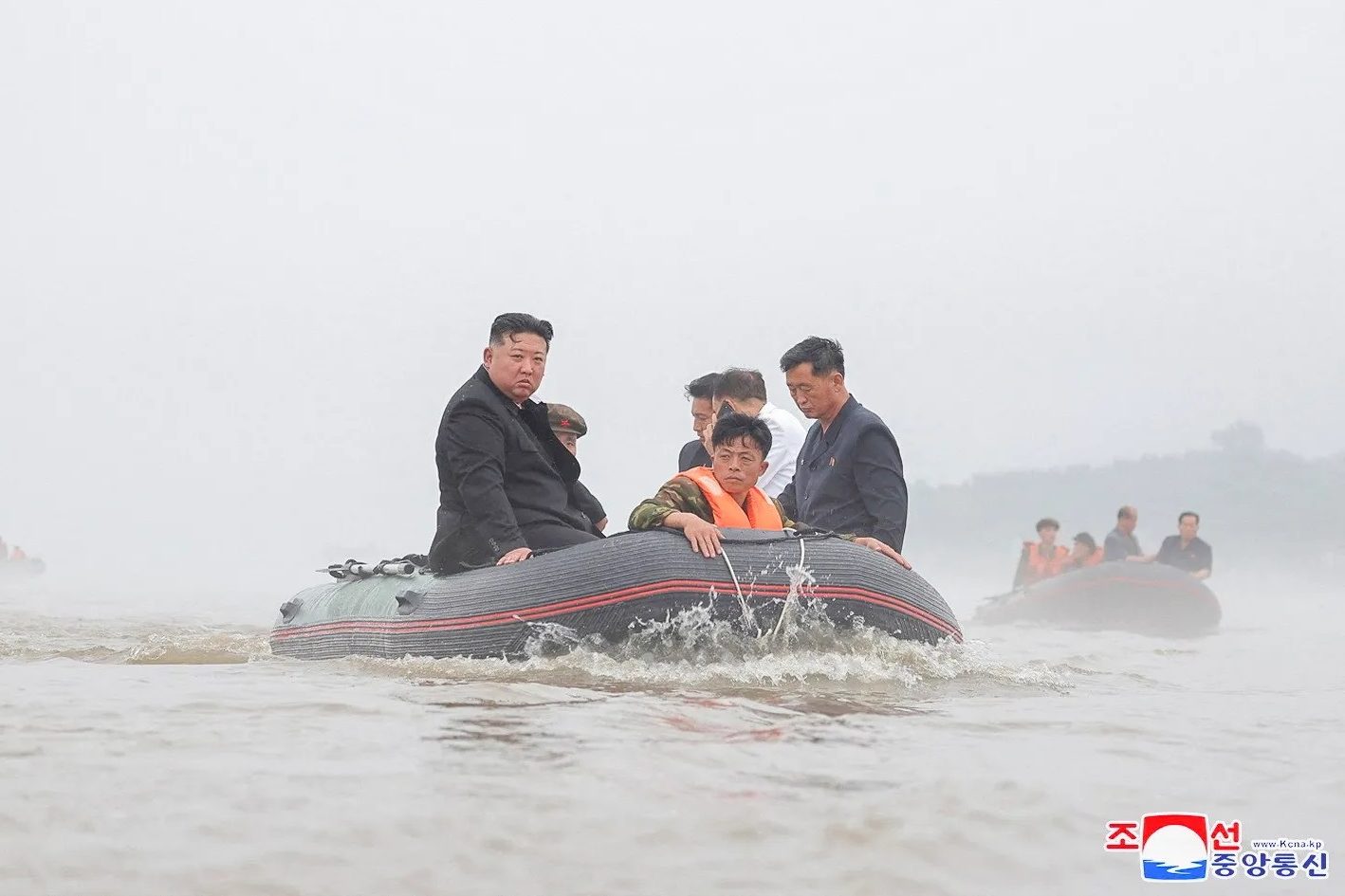The visit by Russian president Vladimir Putin to the northeastern Chinese city of Harbin today was no doubt designed as a symbol of the tightening economic relationship between the two countries. Harbin is a gateway for their burgeoning trade; the Russian leader was there to open a China-Russia expo.
In the minds of many Chinese nationalists, though, Harbin has far darker symbolism. “Little Moscow,” as the city is sometimes called, was established by Russian settlers at the end of the nineteenth century and was the administrative center of the Russian-built Chinese Eastern Railway. This was an imperialist project to give Russia a shortcut to Vladivostok and the Russian Far East, which were themselves snatched from the decaying Qing Dynasty.
China is identifying its struggle with the West ever more closely with that of Russia
The Chinese Communist Party is big on unequal treaties and victimhood at the hands of rapacious foreigners — and Czarist Russia was the most rapacious in terms of territory seized. But the CCP is a master at selective amnesia, and right now circumstances require a trumpeting of what Putin called the “unprecedented level of strategic partnership.” He and Chinese president Xi Jinping vowed to “increase interaction and tighten co-ordination in order to counter Washington’s destructive and hostile course.” They said they would deepen their economic and military ties and claimed their partnership was “one of the main stabilizing factors in the international arena.”
The statement represented a sharp rebuke to secretary of state Antony Blinken, who in a visit to Beijing last month urged Xi to drop his support for Putin’s aggression in Ukraine. Blinken said China’s export of dual use items, such as machine tools and microelectronics were helping Russia sustain its defense industries. He said Moscow “would struggle to sustain its assault on Ukraine without China’s support” and hinted that Washington would act against Chinese firms if the support did not stop.
This week, Putin thanked Xi for his efforts to try and resolve “the Ukraine crisis,” though for the most part — and in spite of Western pressure — the Chinese leader has merely repeated Moscow’s justifications for a war he has refused to condemn, while China’s state-controlled media has echoed Russian disinformation. Beijing is effectively bankrolling the war through a sharp increase in trade. Last year bilateral trade reached a record $240.1 billion, and Russia has become China’s main oil supplier.
Even before the Ukraine war, the balance in the relationship was moving towards China, a move that has been accelerated by the conflict. Russia is now highly dependent on Beijing — though with no sign that Xi is prepared to use that leverage to hasten the end of the war.
This week’s visit is Putin’s first international trip since starting a fifth term in office following his victory in a sham election in March. It also comes as Russian forces are pressing an offensive in northeastern Ukraine’s Kharkiv region — the most significant border incursion since the invasion began in February 2022. Though much of the language in their statements was performative and slogan-ridden, the alliance is strengthening. Western leaders will be particularly concerned that China is identifying its struggle with the West ever more closely with that of Russia. Their joint statement condemned what it called Washington’s “dual containment of our countries.”
Among the top officials traveling with Putin to China were those in charge of defense production, as well as the directors-general for Russian space co-operation and military technical cooperation — suggesting Beijing was not about to reduce the flow of dual use technology to sustain the war effort. The new defense minister Andrey Belousov and his predecessor Sergei Shoigu — now secretary of the security council — were also in the delegation.
There was no detail of what the promised deepening of military ties will involve, but joint military drills have become more frequent and more complex. The drills appear to be going beyond symbolic shows of camaraderie and are aimed increasingly at coordinating command and control and enhancing battlefield interoperability. Last year, Chinese warships joined Russian forces for joint exercises in the Sea of Japan, while in March this year, they conducted drills together in the Gulf of Oman, alongside Iranian forces. The involvement of Iran — a supplier of kamikaze drones to Russia — is evidence in the minds of many analysts of a burgeoning alliance of autocrats (North Korea, also a Chinese ally is supplying artillery shells to Moscow).
Putin was greeted on Thursday by Xi on a red carpet outside the Great Hall of the People in Beijing, alongside marching soldiers from the People’s Liberation Army, a twenty-one-gun salute on Tiananmen Square and children waving the flags of China and Russia. It was thirty-five years almost to the day since the visit to Beijing by then Soviet leader Mikhail Gorbachev for a summit that heralded the rapprochement between the two communist powers. The previous three decades of bitter rivalry had seen border clashes — even nuclear threats from the Soviet Union against its neighbor.
At the time of Gorbachev’s visit, May 15, 1989, protesting students in the Tiananmen Square prevented any formal welcome. Back then, many students saw Gorbachev and his reforms as a sign of hope — but their aspirations were brutally crushed on June 4, when the People’s Liberation Army cleared the square, murdering hundreds if not thousands of protesters. To today’s Chinese leaders, Gorbachev is a bête noir, a man whose weakness led to the collapse of the Soviet Union. They feel much more at home with Putin.
Nevertheless, every move, every nuance of Putin’s two-day visit will be poured over by analysts for signs of any differences between the two leaders. Much of this is wishful thinking — their view of the world and the need to establish a new international order safe for autocrats — are too similar. While it is true that China has a far greater stake in the existing economic order than Russian ever had, Xi has shown that his overriding priority is security, control and his own imperial ambitions. Their relationship has been characterized as a marriage of convenience, and there is certainly an element of that — but it is no less dangerous for it.
One notable absentee from Putin’s encourage was Alexei Miller, the head of Gazprom, Russia’s gas export monopoly. The joint statements from the visit made no mention of the power of Siberia 2 pipeline, once touted as a flagship project by which Russian would divert to China lost gas exports to Europe. There have been disagreements between Moscow and Beijing on important details, including price, amid signs that for all the talk of a “no limits” partnership, China is keen not to become too dependent on Russian energy supplies — while reminding Moscow who is in charge.
The solid grandiose architecture of downtown Harbin gives the place a feel of a Russian city. The red-brick Russian Orthodox Church of St. Sophia, built in 1907, is its most famous landmark and was once the center of spiritual life for Russian settlers. After the Cultural Revolution it was used as a warehouse for a department store.
Putin has sought to portray his aggression in Ukraine as a religious mission, but he is unlikely to find solace at St. Sophia. Openly praying to any god other than the CCP is dangerous in today’s China. St. Sophia, though restored, is today principally a museum and looking towards the heavens risks a less than spiritual encounter with the thousands of incontinent pigeons that have colonized the place. Another inconvenient detail, though for now one unlikely to upset a relationship that Xi characterized as “seventy-five years of persistent accumulation of ever-lasting friendship and all-round cooperation.”
This article was originally published on The Spectator’s UK website.


























Leave a Reply